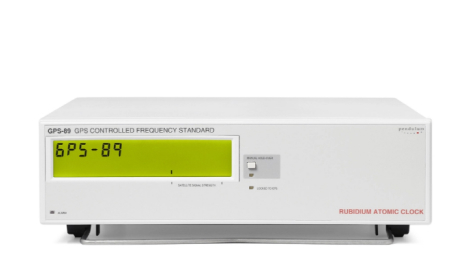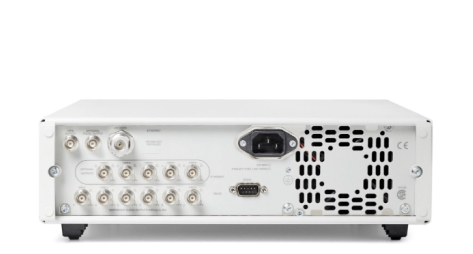

The GPS-controlled frequency standards are especially suited for use in calibration departments, providing continuous traceability with no need for external calibration. The stability/24h is excellent; one part in a trillion.
Unlike other GPS-disciplined oscillators (GPSDO), the disciplining process is not hidden to the user. We have incorporated a high-resolution phase comparator, which continuously compares the local oscillator with the GPS transfer standard. The result of that comparison is stored internally and can be transferred on demand to a PC. The frequency offset is displayed on the front panel and the values are stored in NVRAM for a period of at least 2 years. Now you can remotely read the status of your frequency standard, get phase- or frequency deviation data, print calibration reports and much more via the optional Ethernet communication interface.
Long-term frequency stability is provided from the built-in Cesium-controlled standards in the GPS-satellite. Very high short-term stability comes from the built-in oven controlled crystal oscillator found in the GPS-88; or the built-in Rubidium atomic clock installed in GPS-89, as its local oscillator.
Via the GPSView SW, calibration protocols based on the internally stored calibration data can be generated at any time. Standard frequencies are 1 pps, 10 MHz and 5 MHz. Other reference frequencies, for example 2.048 MHz are available as options. We are continuously developing options and accessories, like outputs for new frequencies, distribution amplifiers etc.
Please request the test report from the Swedish National Testing and Research Institute (SP), which verifies the outstanding stability and traceability of the GPS-89: SP-report.